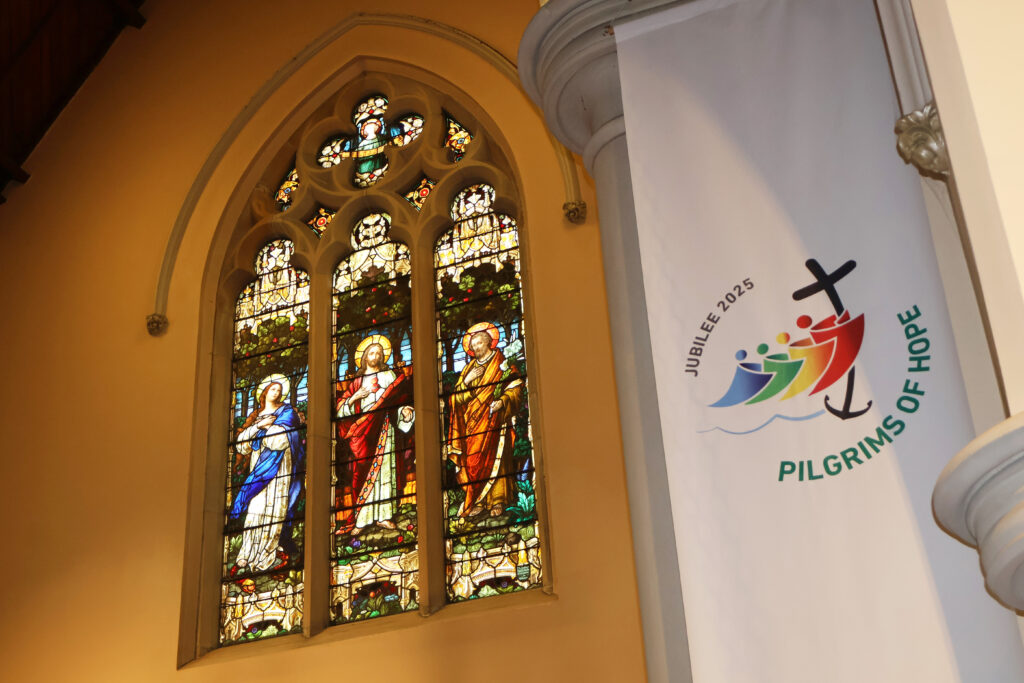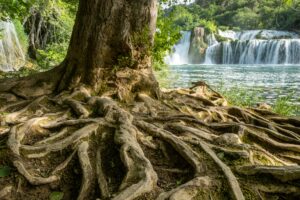
I have been ruminating and praying on “hope” as I prepare myself to guide reflection days on the 2025 Jubilee Year, Pilgrims of Hope, here at Mary MacKillop Place over the next few months. I have come to realise that when we say we are “hoping for” something, we probably mean we are “wishing for” it, “hoping” and “wishing” sometimes used inter-changeably. However, the terms can have quite different nuances. For example, when we speak of “wishful thinking” we are probably trying to suggest a particular wish is almost pointless, the very opposite of being hopeful.
Scriptural usage of “hope” reveals the extent of its significance for the Christian believer. According to the Concordance for the NRSV [New Revised Standard Version] of the Bible, Scripture holds just five references for “wish/wishes” and 79 for “hope/hopes”. Checking that usage, one finds biblical “hope” much more focused on living with fruitful intent in the present than on concerns for the future.
After a closer investigation of language used, I see that Scripture does not speak of “hoping for”, but rather of “hoping in”. I then came to realise that “hope” is more a noun than a verb, a firm ground of being, an existence rooted in loved believing, in trust and reliance born of reflection on life experience. “Hope” is a foundational spirituality based on the conviction that life can be lived well in, and despite, the realities of “now”, because life has already been lived that way and learned from in our very sense that “Hope” is, in fact, God, a Person.
In Psalms 18:1-2, 46:1-2, “hope” is a term by which God, Godself, is named and defined.
my God is my rock, in whom I find protection.
God is my shield, the power that saves me, and my place of safety.
Therefore we will not fear though the earth gives way,
though the mountains be moved into the heart of the sea.
The prophet Jeremiah describes this way of living “hope” as “blessed”:
They will be like a tree planted by the water that sends out its roots by the stream.
It does not fear when heat comes; its leaves are always green.
It has no worries in a year of drought and never fails to bear fruit.
Jeremiah speaks of our hope being “in God”, hope being part of our identity, that part of us which is consciously aware that God lives and moves within us in a personal, meaningful, integral relationship, as the following texts also reveal:
We are created ‘in God’s image’.
We are God’s ‘poiema’ [Greek]… [fruits of God’s ‘self-expressive’ artistry].
“Hope” is a type of “knowing”, the sort of knowing that is visceral. Of course it encompasses mental knowing, but it includes all those sense dimensions of the human person through which God reveals Godself within a human person. Dei Verbum, Vatican II’s Dogmatic Constitution on Divine Revelation speaks of it this way:
#5. The human person commits their whole self freely to God, offering the full submission of intellect and will to God who reveals God’s own Self… To make this act of faith, the grace of God and the interior help of the Holy Spirit precedes and assists, moving the heart and turning it to God, opening the eyes of the mind and giving joy and ease to everyone in assenting to the truth and believing it. To bring about an ever deeper understanding of revelation the same Holy Spirit constantly brings faith to completion through the divine gifts. [1]
This draws on what Romans 5:5 reminded us:
Romans 8:38-39 then spells out the depth and breadth and height and length of such firmly embedded hope.

Thus, in a later letter Hebrews 6:19 can speak of this awareness of God’s Spirit within us as “a hope that enters into the inner place behind the curtain [of our being]”.
Hebrews 6:19 describes hope as a “sure and steadfast anchor of the soul”. It is from here that we draw the image of the logo for the Year of Jubilee, Pilgrims of Hope. It features the Cross as an anchor securing us in hope against being overwhelmed in the realities we face daily in life.
This leads me to reflect personally. For 60 years I have ministered as a Sister of Saint Joseph in a variety of ways, primarily in the teaching of children, the religious education of teachers and the faith enrichment of adults. In the last 18 months, besides offering occasional retreats and reflection days, on Saturdays I sit silently in Mary MacKillop Memorial Chapel, North Sydney. I accompany people from a range of ages, genders and walks of life as they take the pains of travel and come to visit to pray. Nothing in my ministry life has given me more personal satisfaction. Whereas I have spent a lifetime working “for” people, I now pray “with” them, and I learn more deeply to appreciate some of what they exhibit: stillness, silence, reverence, piety, devotion. I find myself absorbed in the experience of being in the Presence of God and in the company of others similarly absorbed. It is a beautiful, humbling experience.
Last Saturday 31 May, on the last day of Autumn as the sun came in through the ceiling window near the altar of Mary, the Mother of God, the place close to where Mother Mary of the Cross, our Saint Mary was buried for the second time, I noted that 81 pilgrims came here across three hours. I saw variations of genuflections, some obviously a little painful, and I saw people making repeated Signs of the Cross: some deliberately slow, some fast, some a bit elusive. It reminded me of how repeated gestures can become a bit ‘wonky’, one might say, but it confirmed in me what lies steadfastly within the heart of those praying: a sense of the Essence of the Presence of God in their lives. For them, I thought, Hope is real, Hope is a Person. Hope is expressed with the Sign of the Cross which is their anchor gesture, the tell-tale sign of what holds their lives together.
View upcoming Mary MacKillop Place Jubilee Year Reflection Days and register here.
Virginia M. Bourke rsj
[1] #5 Dei Verbum, The Dogmatic Constitution on Divine Revelation, Vatican Council II, Liturgical Press, Collegeville, MN 1975 and 1984. #5.
